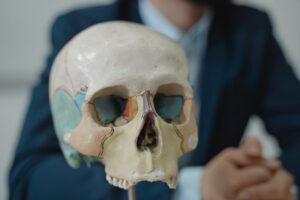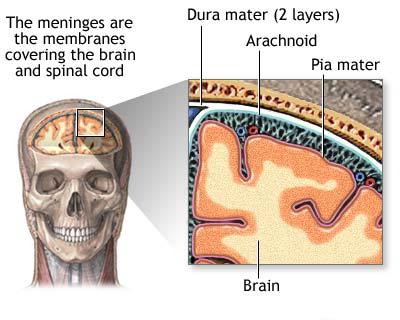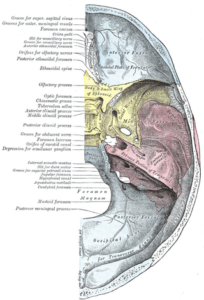 Twenty-five years ago, I had a neighbor who was a martial artist – a Tae Kwon Do champion. I told him that I had dabbled in Tai chi ch’üan a decade earlier and asked him if it was a legitimate fighting form. He said, “If you want to be able to kick somebody’s ass in a short learning time, Tae Kwon Do is the best…but if you study Tai chi for twenty years, nobody will be able to beat you. It’s the baddest of the bad.” Thinking back on it today, it reminds me of an analogous situation with two healing arts I practice: chiropractic and cranial-sacral therapy. Being a long-time practitioner of both, I can safely say: If you want to help yourself physically in a short time, direct and to the point, nothing beats chiropractic…but if you visit a practitioner who has studied and practiced cranial-sacral therapy for twenty plus years, you will find no deeper physical healing.
Twenty-five years ago, I had a neighbor who was a martial artist – a Tae Kwon Do champion. I told him that I had dabbled in Tai chi ch’üan a decade earlier and asked him if it was a legitimate fighting form. He said, “If you want to be able to kick somebody’s ass in a short learning time, Tae Kwon Do is the best…but if you study Tai chi for twenty years, nobody will be able to beat you. It’s the baddest of the bad.” Thinking back on it today, it reminds me of an analogous situation with two healing arts I practice: chiropractic and cranial-sacral therapy. Being a long-time practitioner of both, I can safely say: If you want to help yourself physically in a short time, direct and to the point, nothing beats chiropractic…but if you visit a practitioner who has studied and practiced cranial-sacral therapy for twenty plus years, you will find no deeper physical healing.
I am simplifying things a bit with this statement because different people and situations respond differently to different healing modalities – there is no one-size-fits-all panacea. However, when evaluating a hierarchy of dysfunction that can disrupt the human body, cranial-sacral therapy addresses those at the most fundamental levels of human physiology: the deepest inner-cores of the neuromusculoskeletal system. Chiropractic works on the joints, disks, ligaments, and muscles surrounding the vertebral segment. Its primary purpose is to reduce fixation, rotation, translation, and restriction of spinal, pelvic, and extraspinal structures. As a result of correction to faulty or disrupted spinal joint motion, the nervous system (through the spinal nerves) is relieved of pressure (or hinderance of function), and allowed to operate unimpeded, thus restoring health to the body.
Cranial-sacral therapy, on the other hand, works on the deeper layers of the nervous system – the meninges to be exact, and their attachments to the cranium (skull) and sacrum (tailbone), as well as their production and movement of cerebrospinal fluid (CSF) throughout the central nervous system (CNS). Cranial-sacral therapy works by adjusting or correcting dysfunctions at the cranial sutures, as well as pelvic and sacral fixations, rotations, and restrictions. In so doing, the meninges are released from tensions and constrictions which hamper their function of producing the CSF, as well as the natural cranial-sacral rhythm which moves the CSF throughout the brain and spinal cord.
The Cranial-Sacral System
 Let’s start from the beginning and describe the anatomy of the cranial-sacral system. The CNS, which is the brain and spinal cord, are surrounded by a connective tissue membrane called the meninges. As a protective sheath, the meninges are three layers: the dura mater, the arachnoid, and the pia mater. The dura mater, the external layer, is closest to the bony structures of the skeleton and skull. It is a tough, relatively inelastic layer which fuses to the inner aspect of the skull. It attaches caudally (toward the tail) to the second sacral segment (tailbone). The dura mater has few spinal attachments, and so it is relatively free to move within the spinal canal. The dura in the spinal canal from the foramen magnum (skull opening for the spinal cord) to the sacrum is called the core link. Any tension in the dura at the cranium or sacrum can cause tensions within the core link itself, leading to misalignment and imbalance at the associated spinal segment and neurological level.
Let’s start from the beginning and describe the anatomy of the cranial-sacral system. The CNS, which is the brain and spinal cord, are surrounded by a connective tissue membrane called the meninges. As a protective sheath, the meninges are three layers: the dura mater, the arachnoid, and the pia mater. The dura mater, the external layer, is closest to the bony structures of the skeleton and skull. It is a tough, relatively inelastic layer which fuses to the inner aspect of the skull. It attaches caudally (toward the tail) to the second sacral segment (tailbone). The dura mater has few spinal attachments, and so it is relatively free to move within the spinal canal. The dura in the spinal canal from the foramen magnum (skull opening for the spinal cord) to the sacrum is called the core link. Any tension in the dura at the cranium or sacrum can cause tensions within the core link itself, leading to misalignment and imbalance at the associated spinal segment and neurological level.
 Each of the cranial nerves is also surrounded by the dural sheath. The cranial nerves include the olfactory nerve for smell, optic nerve for visual messages, the vestibulocochlear nerve for balance, and the vagus nerve for internal organ regulation, among others. Further, the pituitary gland sits in the sella turcica of the sphenoid bone, which is lined by dura mater called the diaphragma sellae. Finally, all spinal or peripheral nerves are surrounded by the dural sheath called epineurium. As a continuation of dura mater from the spinal cord (core link), the epineurium covers all nerves throughout the body down to the fingers and toes. Dura mater, as it turns out, covers the entire body from head to toe.
Each of the cranial nerves is also surrounded by the dural sheath. The cranial nerves include the olfactory nerve for smell, optic nerve for visual messages, the vestibulocochlear nerve for balance, and the vagus nerve for internal organ regulation, among others. Further, the pituitary gland sits in the sella turcica of the sphenoid bone, which is lined by dura mater called the diaphragma sellae. Finally, all spinal or peripheral nerves are surrounded by the dural sheath called epineurium. As a continuation of dura mater from the spinal cord (core link), the epineurium covers all nerves throughout the body down to the fingers and toes. Dura mater, as it turns out, covers the entire body from head to toe.
Cerebrospinal Fluid (CSF)
CSF is a clear, colorless fluid that is produced in the ventricles (cavities) of the brain and is found in the subarachnoid space surrounding the brain and spinal cord of all vertebrates. It bathes the entire CNS, acting as a shock absorber to prevent mechanical injury, maintaining natural buoyancy of the brain as it rests in the skull, regulating blood flow to the brain through changes in intracranial pressure, acting as a metabolic and endocrine homeostatic regulator, and removing metabolic waste products from the brain.
CSF circulates within the ventricular system of the brain, which are four interconnected cavities known as cerebral cavities. It is produced by the choroid plexus which is neurological tissue found in all four ventricles. The fluid passes from the ventricular system to the subarachnoid space, which is just beneath the middle layer of the meninges known as the arachnoid (called such because of its resemblance to a spider’s web). As a result, CSF circulates around the entire CNS from the brain to the sacrum. CSF is then resorbed back into the venous circulation by the arachnoid bodies, which are concentrated primarily in the intracranial venous sinus system, the majority of resorption happening in the sagittal sinus.
 CSF production from the choroid plexuses and resorption by the arachnoid bodies exists in a fluctuating hydrostatic pressure gradient creating a rhythmic ebb and flow of CSF from cranium to the spinal canal. Since there is no continuous loop circulation of CSF as in the cardiovascular system, spinal CSF fluctuates in biphasic tides of cephalic ebb and caudal flow (Wheadon, JM and Glassey, D, Altern Ther Health Med. 2009 May–Jun; 15(3): 54–60.) As a result of low intrathecal (subarachnoid space in spinal cord) pressure, diminishing pulse waves in the more caudal regions of the spinal canal, and barriers to free or unobstructed cephalad (headward) flow, both caudad and cephalad flow of CSF may occur simultaneously in the spinal subarachnoid space.
CSF production from the choroid plexuses and resorption by the arachnoid bodies exists in a fluctuating hydrostatic pressure gradient creating a rhythmic ebb and flow of CSF from cranium to the spinal canal. Since there is no continuous loop circulation of CSF as in the cardiovascular system, spinal CSF fluctuates in biphasic tides of cephalic ebb and caudal flow (Wheadon, JM and Glassey, D, Altern Ther Health Med. 2009 May–Jun; 15(3): 54–60.) As a result of low intrathecal (subarachnoid space in spinal cord) pressure, diminishing pulse waves in the more caudal regions of the spinal canal, and barriers to free or unobstructed cephalad (headward) flow, both caudad and cephalad flow of CSF may occur simultaneously in the spinal subarachnoid space.
One theory on CSF flow is based on production and resorption gradients creating a sort of pressurestat-type system whereby a rhythmic rise and fall of fluid pressure creates simultaneous rhythmic changes in the osseous (bony) boundaries of the semi-closed hydraulic system. These boundaries are the cranial bones, their associated articulation points (the sutures), and the sacrum.
The Cranial Sutures
 The skull has 22 bones: eight making up the cranium, which houses and protects the brain, and fourteen facial bones. All cranial and facial bones are connected by fibrous joints called sutures. At one time, medical anatomists believed that the cranial sutures ossified – that is, that they fused solidly. However, it came to light that the sutures were actually areas of movement for the skull bones relative to one another and thus were joints. We now know that the skull joints must move in accordance to the flow of CSF.
The skull has 22 bones: eight making up the cranium, which houses and protects the brain, and fourteen facial bones. All cranial and facial bones are connected by fibrous joints called sutures. At one time, medical anatomists believed that the cranial sutures ossified – that is, that they fused solidly. However, it came to light that the sutures were actually areas of movement for the skull bones relative to one another and thus were joints. We now know that the skull joints must move in accordance to the flow of CSF.
This movement is palpable as a cranial-sacral rhythm that can be felt in the skull, at the sacrum, and frankly anywhere in the body by a skilled practitioner. The observer essentially feels for the expansion and contraction of the cranial sutures which can be described as a flexion and extension of the skull. At the same time, the sacrum can be felt to rock on its transverse axis, such that it moves anteriorly (toward the front) and posteriorly (toward the back) simultaneously, and in rhythm, to the cranial movements. When the body is disrupted, by either mechanical injury/lesion or pathology (internal disease), this movement is also disrupted. It will be felt as increased or diminished frequency of cranial-sacral rhythms or unbalanced and out-of-sync rhythms.
Because of the attachments of dura mater to the cranial bones and sacrum, the skull and tailbone move in accordance to the rhythms of CSF flow through the cranium and spinal canal. Any obstruction to that movement, whether at the level of the CSF itself, the meninges (specifically the dura mater), the cranial sutures, or the sacrum, could affect the other elements. In other words, injuries to the skeletal system could affect the tension in the dura mater, as well as the flow of CSF throughout the cranium and spinal canal. Alternately, internal disease, whether of the CNS itself, the sensory organs (eyes, ears, nasal, or mouth), or any other organ in the body, could affect the tension in the dura mater, which in turn can disrupt the rhythm of the cranial sutures and sacrum.
Cranial-Sacral Therapy
Cranial-sacral therapy is any technique or modality that addresses the integrity of the cranial-sacral rhythm. Because of the complexity of this natural body rhythm – associated with the production and resorption of CSF, its flow throughout the CNS, its connection to the meninges, and the dura mater’s connection, literally and figuratively, to the cranial bones and sacrum – it is used as both a diagnostic tool and treatment modality for a number of ailments.
Some of the many illnesses and conditions that have benefitted from cranial-sacral therapy are:
- Chronic pain (especially that which has not responded well to traditional chiropractic, medicine, or other modalities)
- Headaches (both tension and migraine)
- Dizziness
- Tinnitus (ringing in the ears)
- Sleep disturbances
- Visual problems
- Epilepsy
- Complex regional pain syndrome (CRPS)
- Multiple sclerosis
- Neuralgia (nerve pain)
- Neurodegenerative diseases (Alzheimer’s disease, Parkinson’s disease, Amyotrophic lateral sclerosis – ALS)
- Fibromyalgia
- Temporo-mandibular joint (TMJ) syndrome
- Stroke
- Post-concussion syndrome
- Speech impairment
- Autism and ADHD
- Brain injuries
- And more
Cranial-sacral therapy works by resetting or rebalancing the natural cranial-sacral rhythm. The cranial-sacral practitioner affects the rhythm by making light, gentle contacts on or around the cranial sutures. These micro-pressures unwind constricted dura and remove tensile strain. In turn, the CSF regains its ability to flow freely throughout the CNS. By removing obstructions to the dura mater, the spinal segments from the sacrum, pelvis, and spinal joints release and align allowing the patient to hold their body adjustments longer. This reduces pain and increases the natural healing of the body. Cranial-sacral therapy works at the deepest levels of the nervous system, affecting all the outward layers from the meninges to the skeletal bones to the fascia to the muscles. Cranial-sacral therapy is a wholistic healing art that allows the body to repair itself and recuperate naturally through its own powerful rhythms.
 All healing arts have their place and areas where they are most effective. Whether talking medicine, acupuncture, physical therapy, light therapy, therapeutic exercise, and so forth, different techniques and modalities have their unique physiological influences. Traditional chiropractic gets right to the point for low back, neck and upper back pain injuries. If you have slept funny and wake up with a crook in your neck that you cannot seem to stretch out, then nothing beats chiropractic to relieve your stiff neck. Develop low back pain or have a rare headache that pops up after a few days of stress – again, nothing beats chiropractic, especially if you want natural healing without the use of dangerous drugs. But for those hard-to-treat maladies, the ones that do not seem to respond to other healing arts or medicine, cranial-sacral therapy may be what you need. Many people have had the experience of visiting multiple practitioners only to hit one wall after another. For these people, cranial-sacral therapy just might provide the help they so desperately need. With its comprehensive effect on the entire nervous system, it has a wide-ranging promise for so many physical ailments. Along with its gentle application and deeply relaxing effects, cranial-sacral therapy is the Tai chi of neuromuscular body care. You will get the deepest and longest lasting healing by visiting a seasoned cranial-sacral chiropractic doctor. If you are in the Coachella Valley, Palm Springs, or Palm Desert, or in Los Angeles, West Hollywood, or Beverly Hills, please call me today to set your appointment. Take your healing to the next level and visit a cranial-sacral doctor today.
All healing arts have their place and areas where they are most effective. Whether talking medicine, acupuncture, physical therapy, light therapy, therapeutic exercise, and so forth, different techniques and modalities have their unique physiological influences. Traditional chiropractic gets right to the point for low back, neck and upper back pain injuries. If you have slept funny and wake up with a crook in your neck that you cannot seem to stretch out, then nothing beats chiropractic to relieve your stiff neck. Develop low back pain or have a rare headache that pops up after a few days of stress – again, nothing beats chiropractic, especially if you want natural healing without the use of dangerous drugs. But for those hard-to-treat maladies, the ones that do not seem to respond to other healing arts or medicine, cranial-sacral therapy may be what you need. Many people have had the experience of visiting multiple practitioners only to hit one wall after another. For these people, cranial-sacral therapy just might provide the help they so desperately need. With its comprehensive effect on the entire nervous system, it has a wide-ranging promise for so many physical ailments. Along with its gentle application and deeply relaxing effects, cranial-sacral therapy is the Tai chi of neuromuscular body care. You will get the deepest and longest lasting healing by visiting a seasoned cranial-sacral chiropractic doctor. If you are in the Coachella Valley, Palm Springs, or Palm Desert, or in Los Angeles, West Hollywood, or Beverly Hills, please call me today to set your appointment. Take your healing to the next level and visit a cranial-sacral doctor today.

